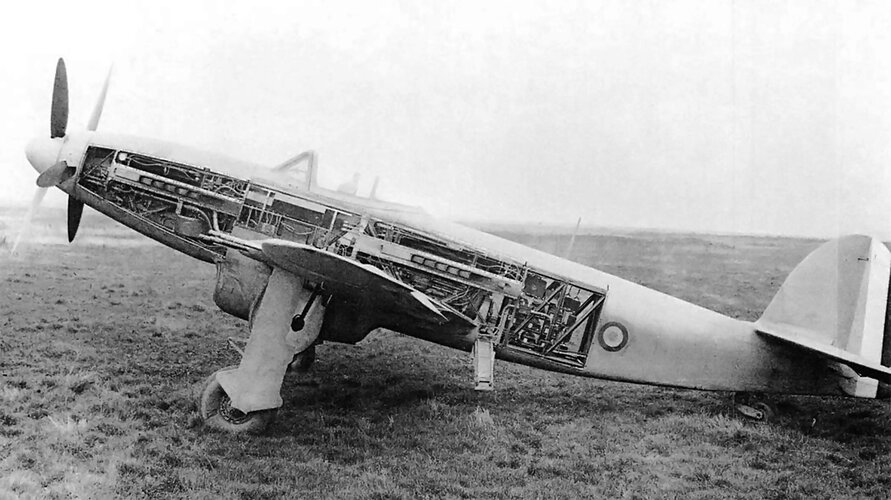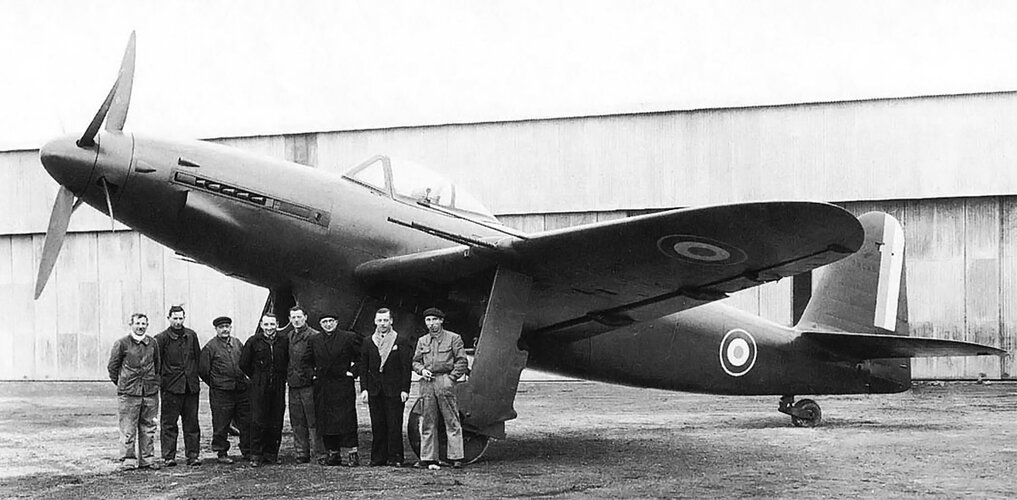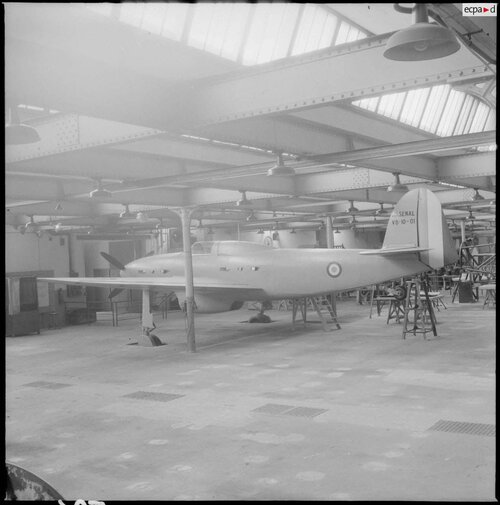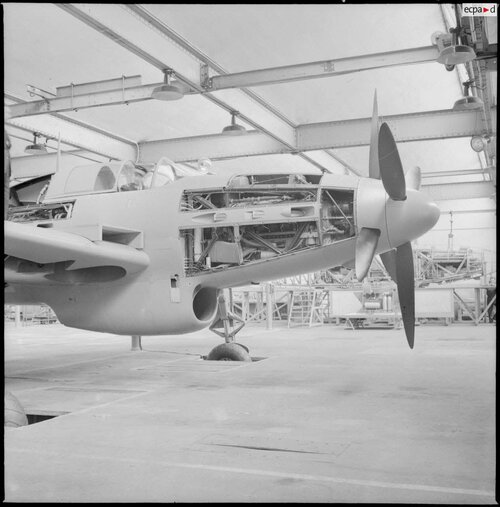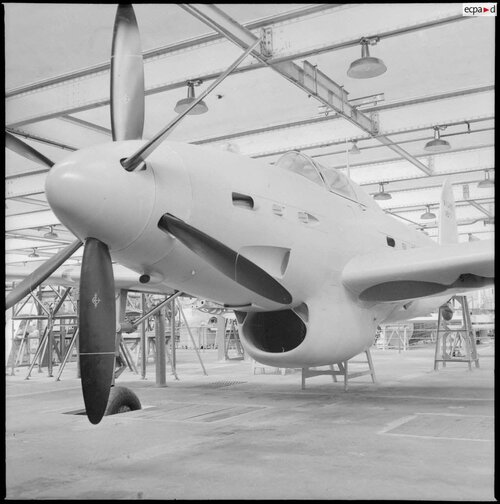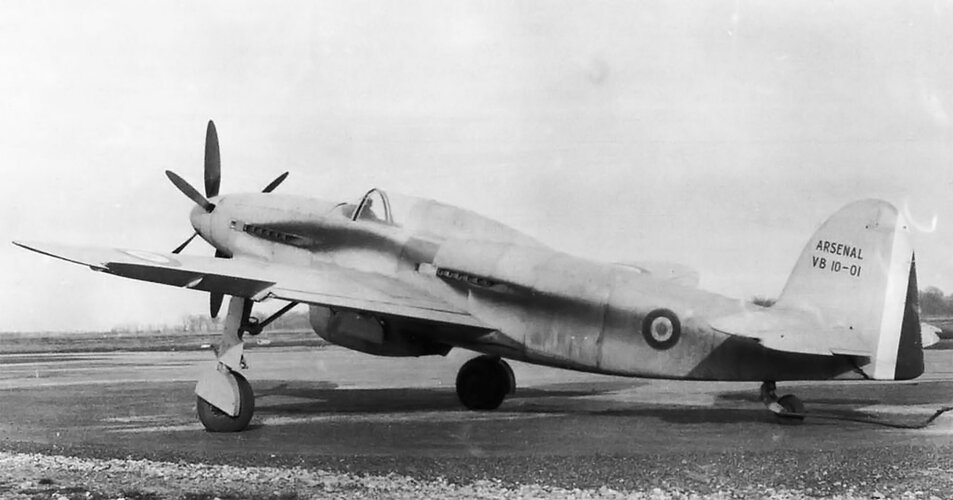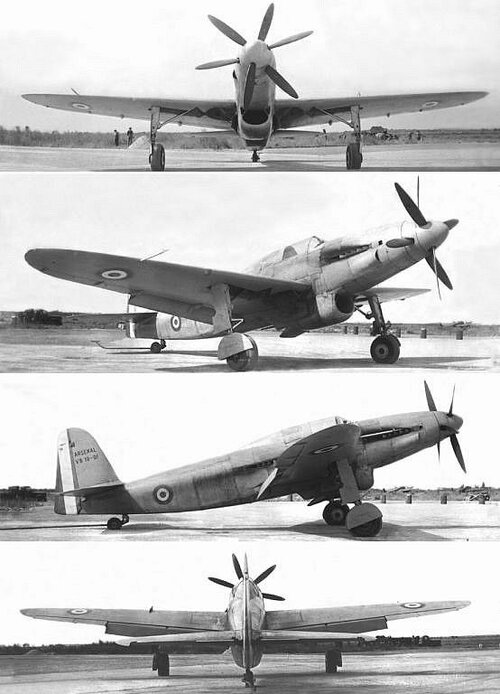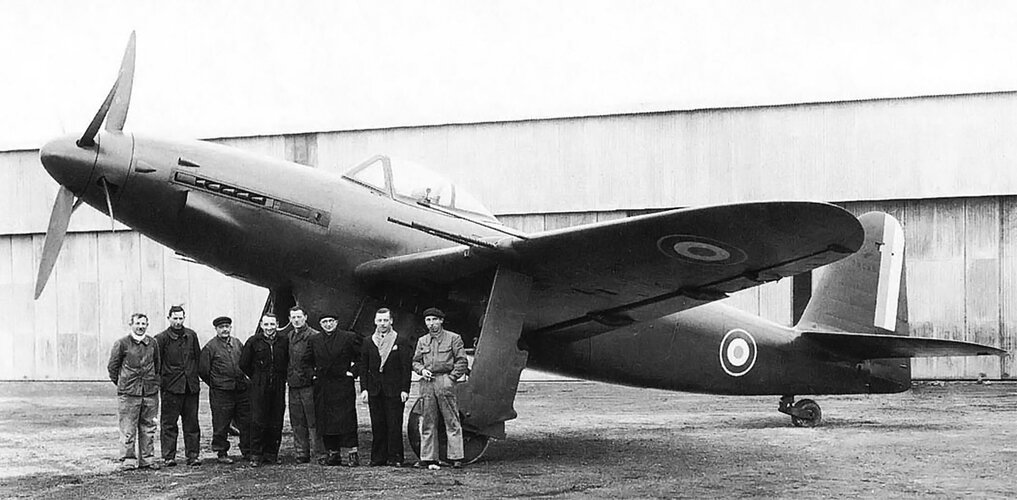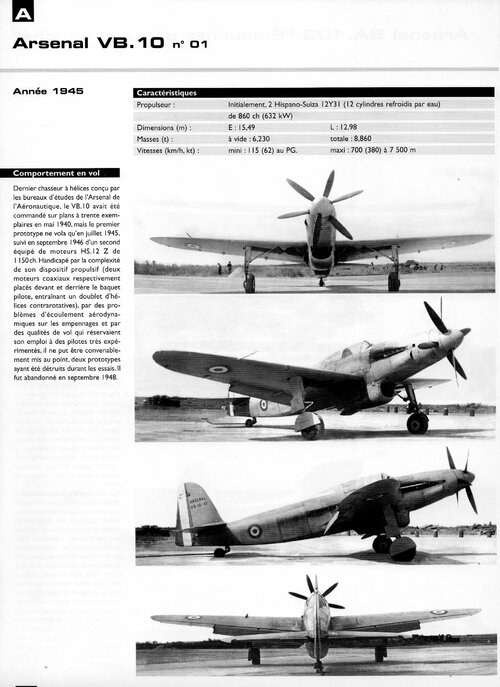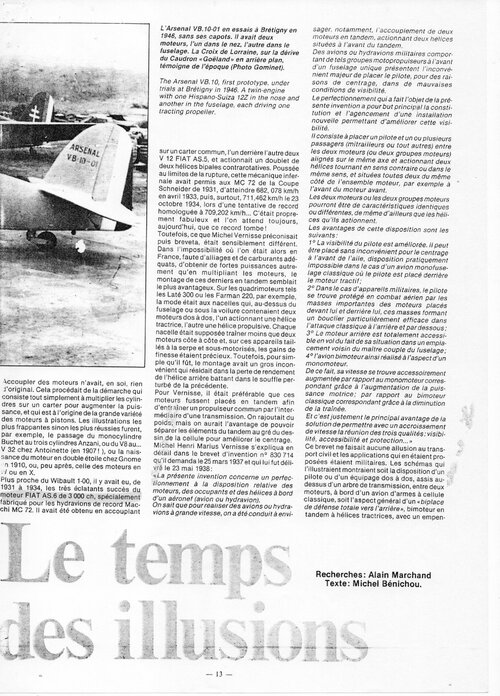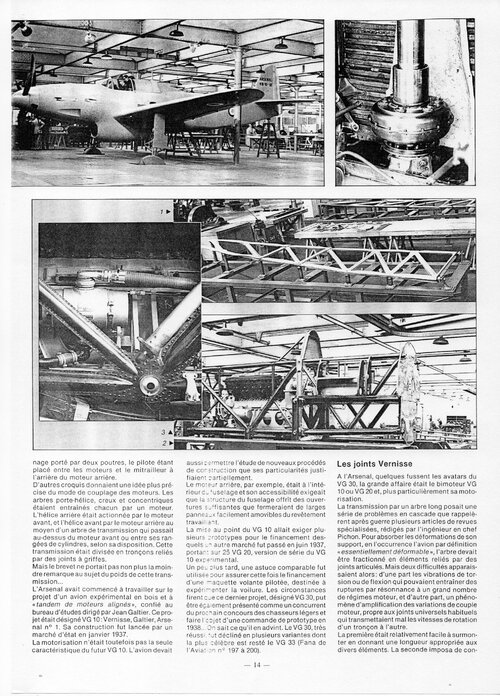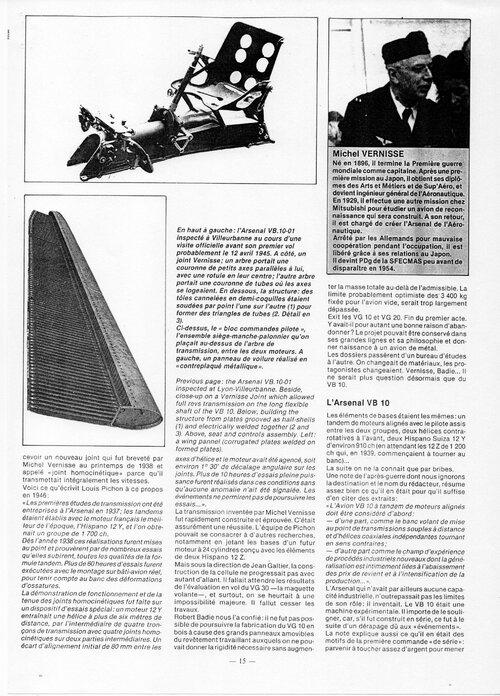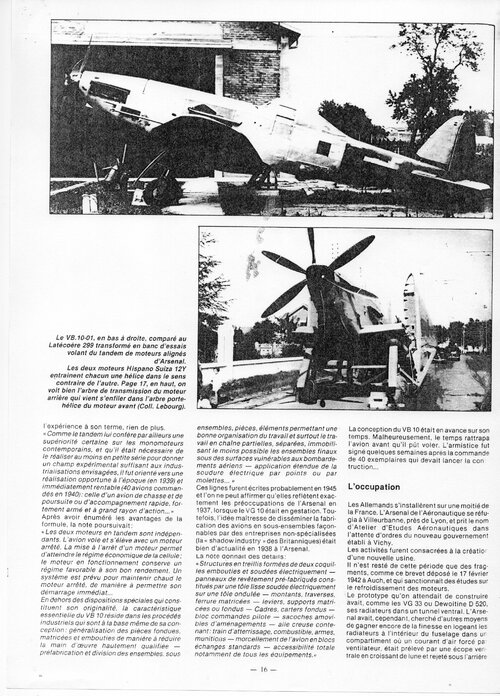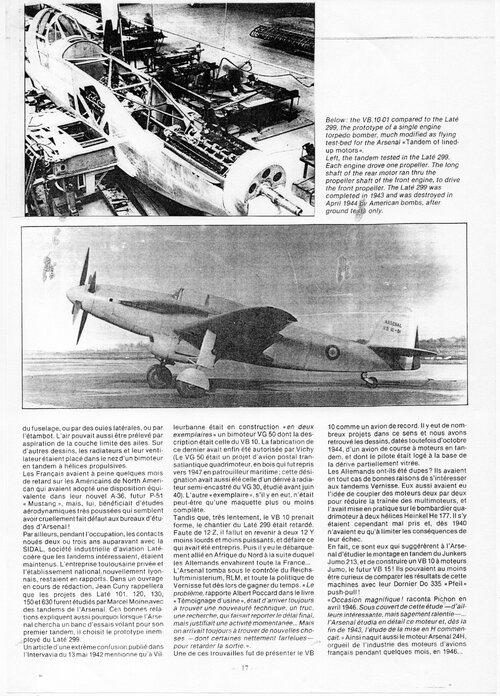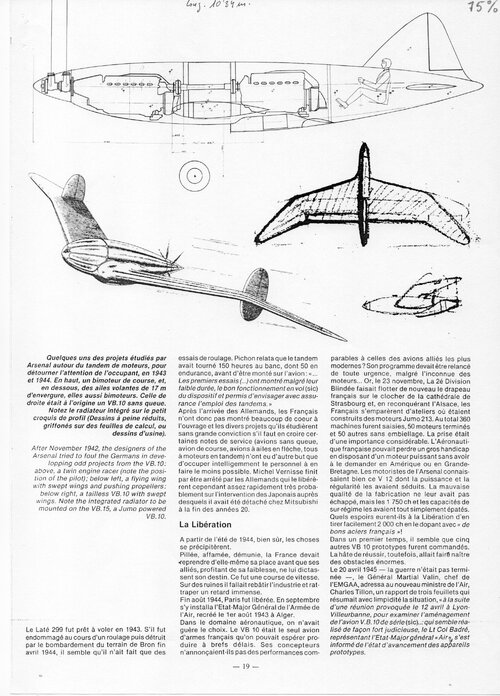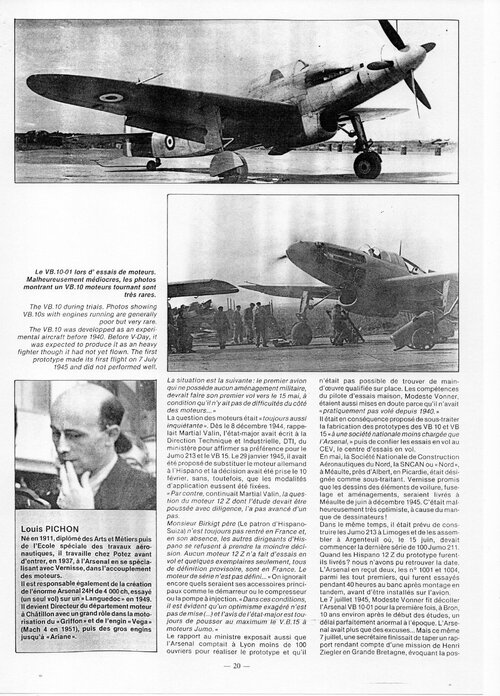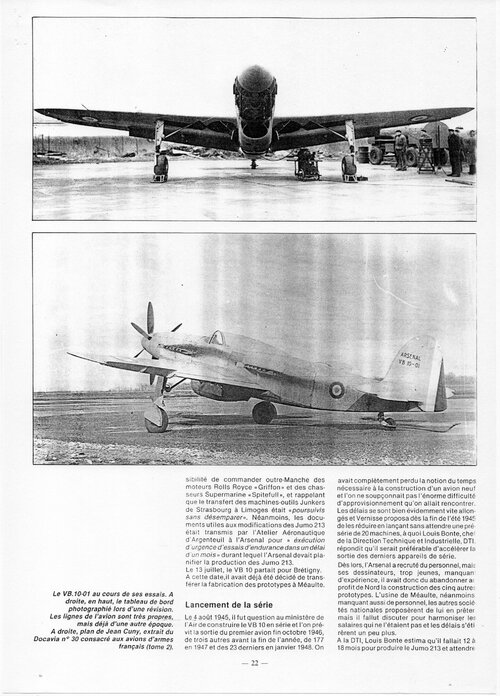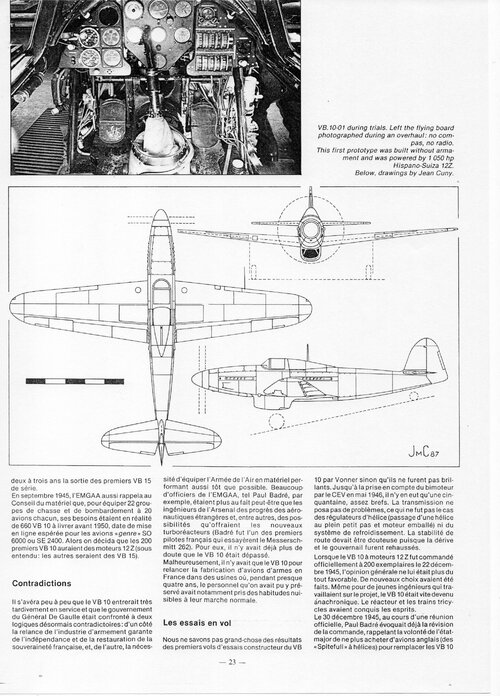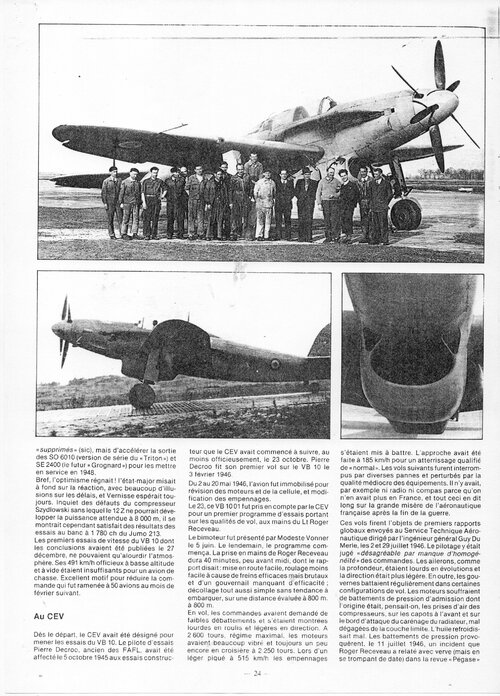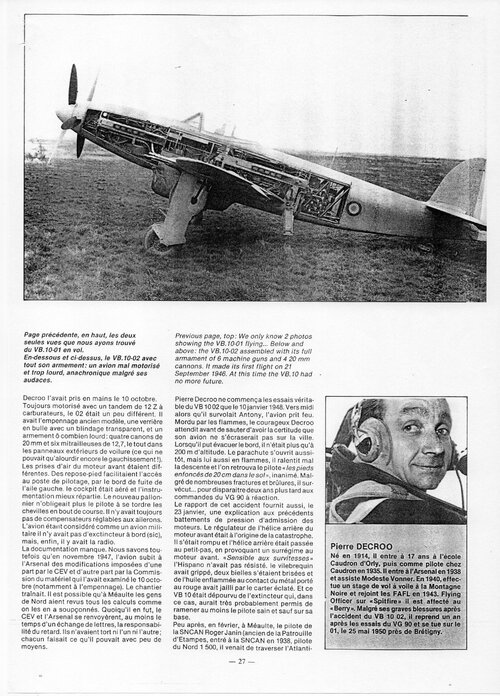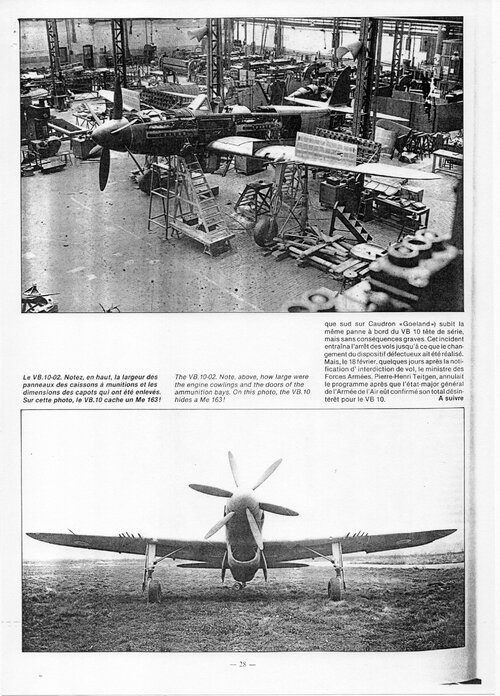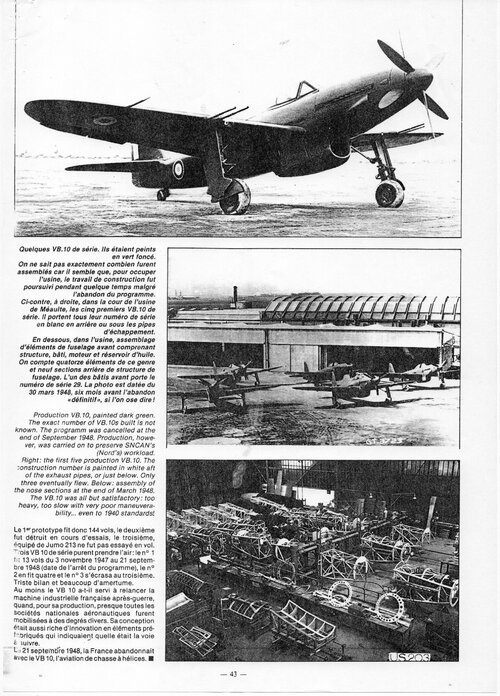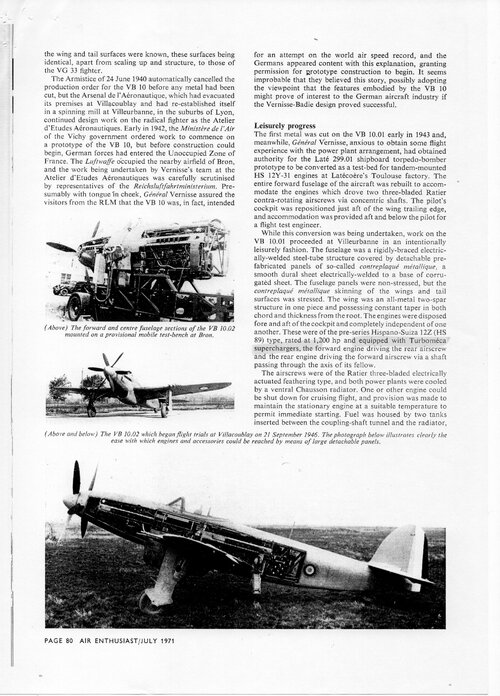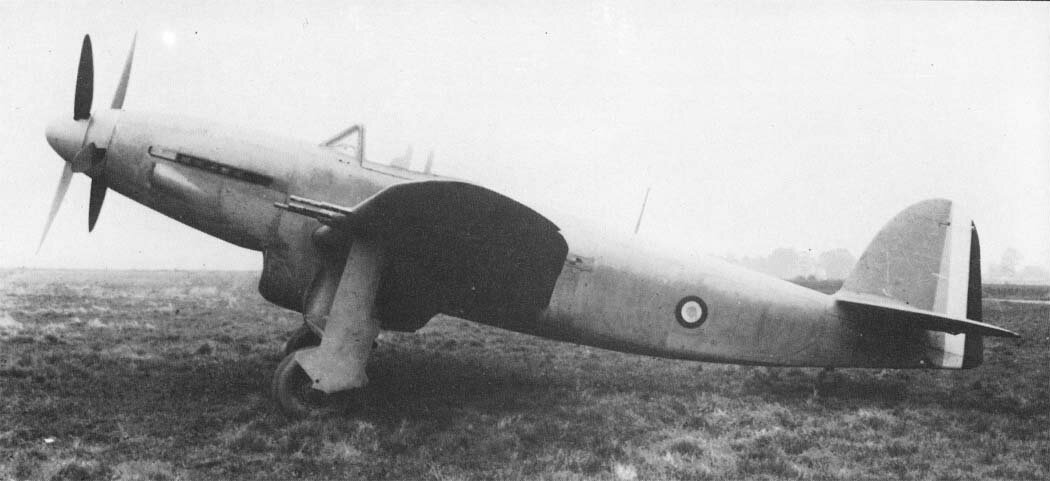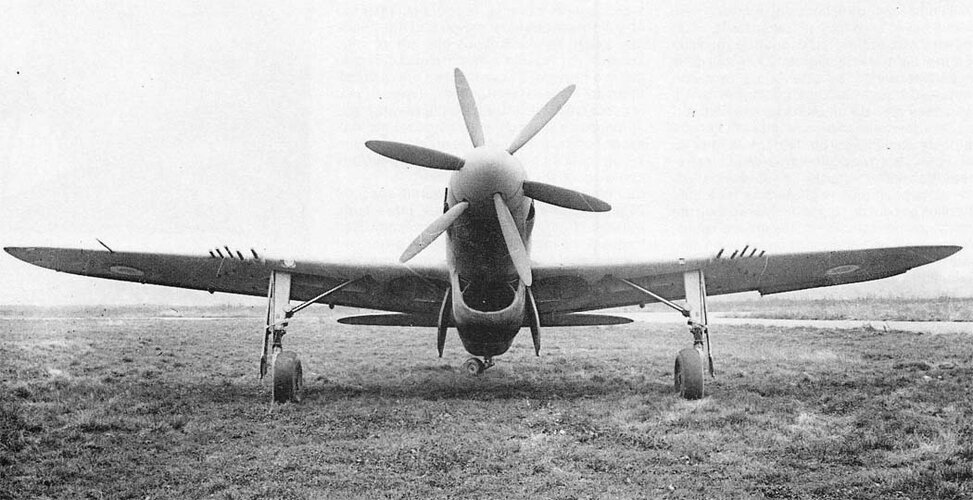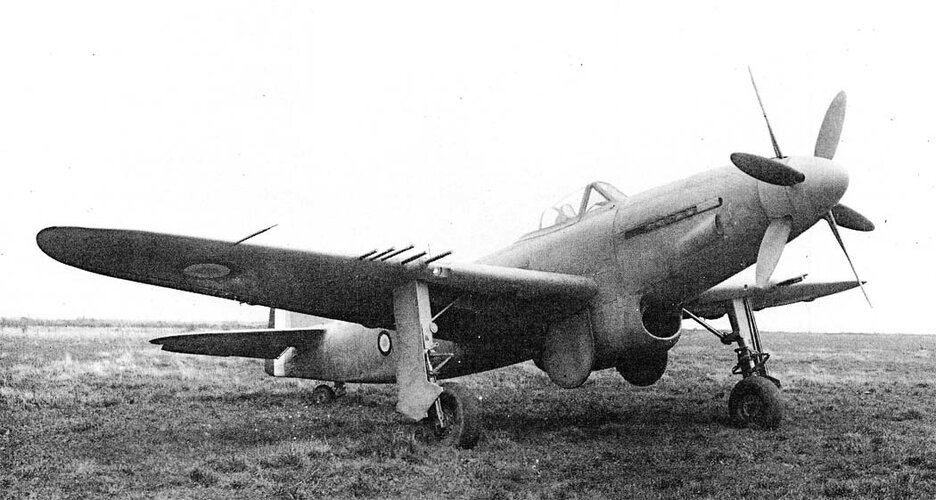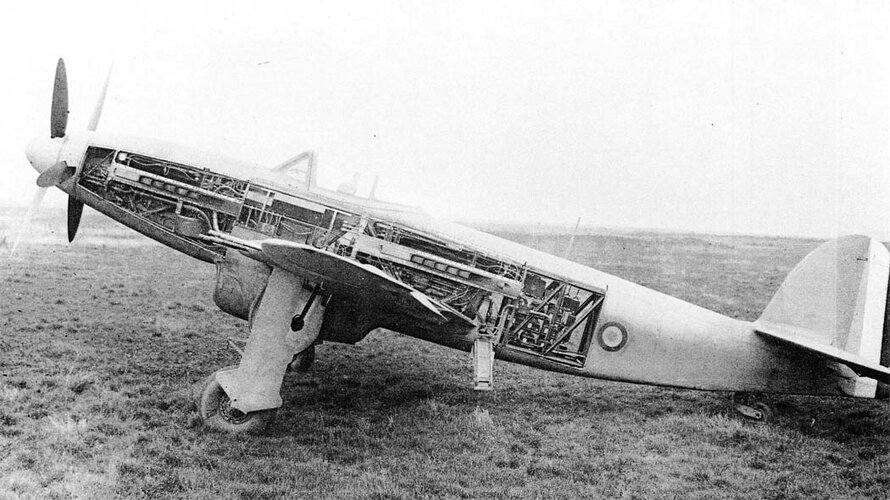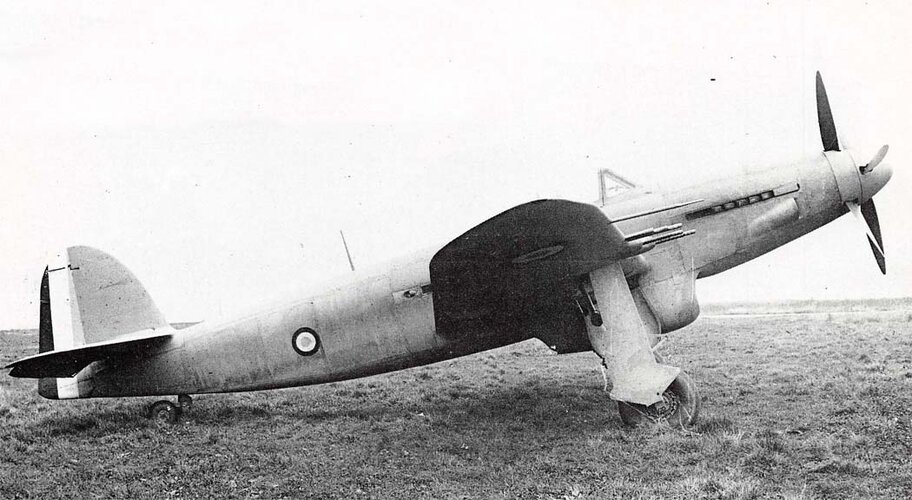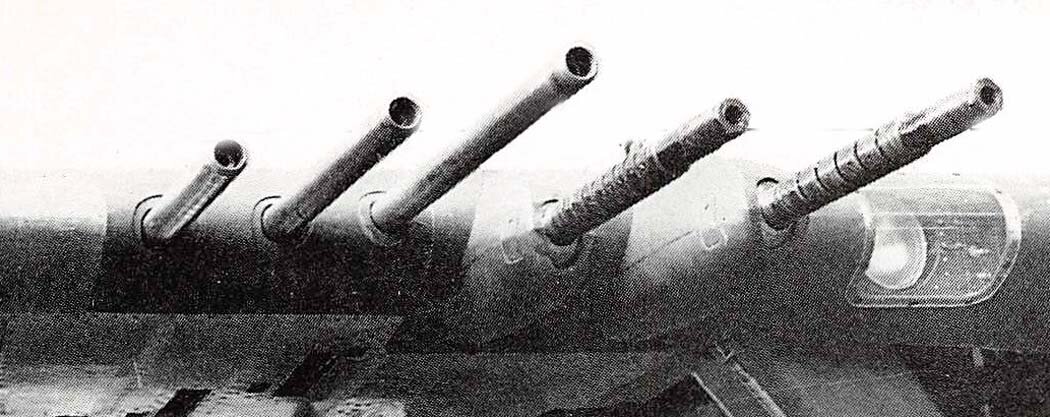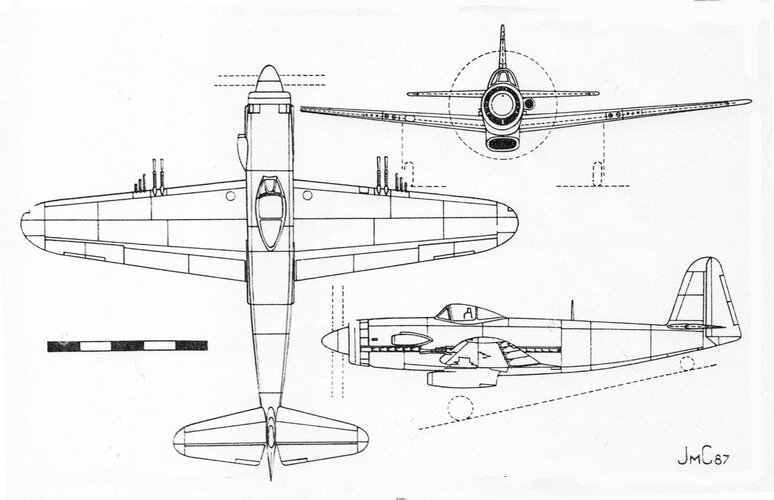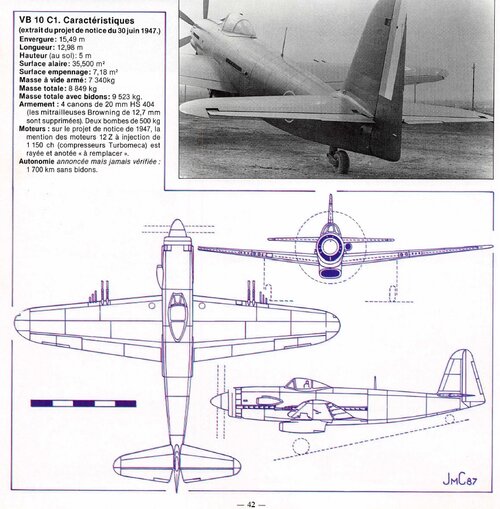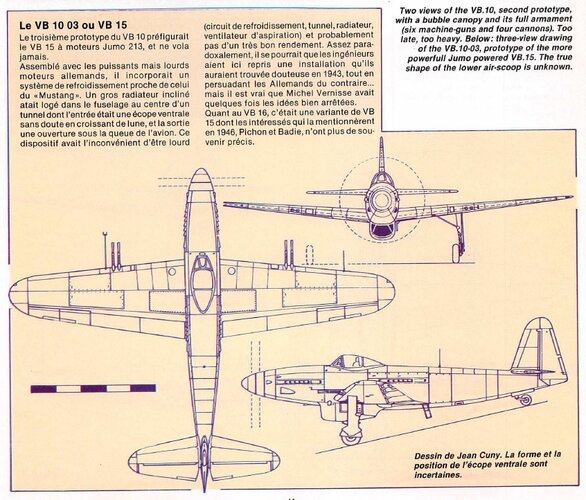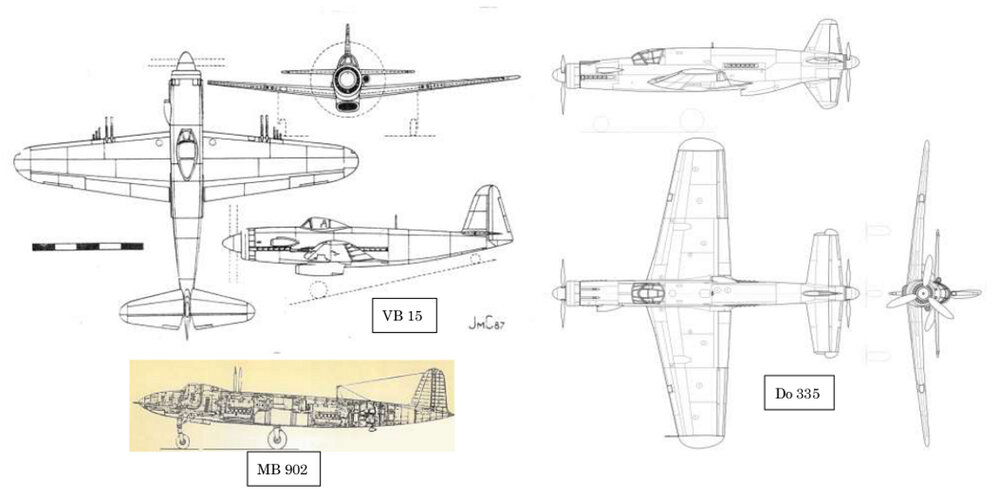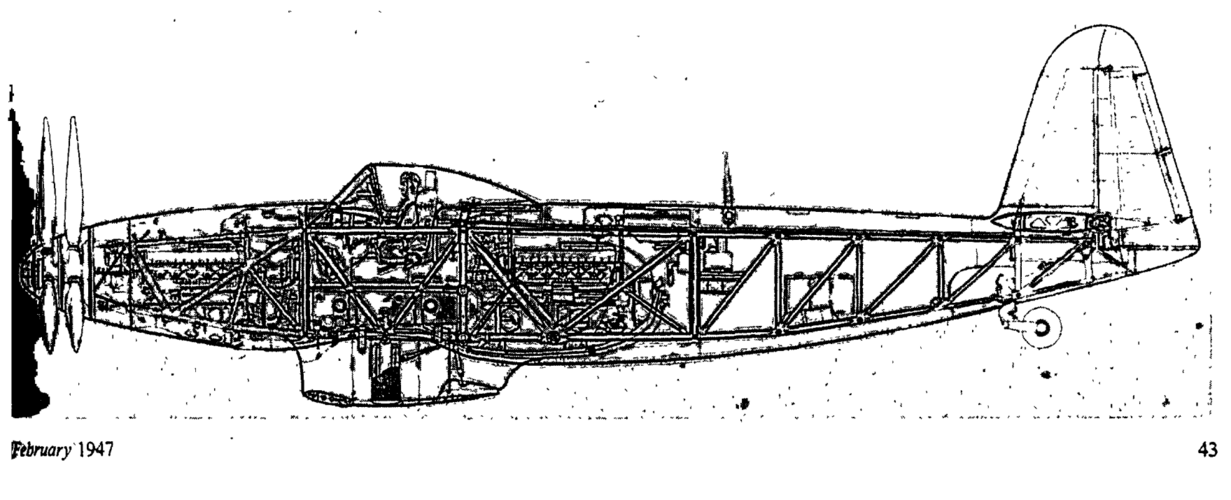A bit more conventional was the system of engines in tandem designed during the German occupation by the engineer Michel Vernisse. It was to power the Arsenal VB.10 fighter by using two Hispano-Suiza H.S. 12Z engines. One of them was installed in the nose of the airplane and the other in the central section of the fuselage. Both were connected to each other by a power shaft that went under the pilot seat, like in the Bell P-39 Airacobra. Excessive vibrations were removed by the device known as joint homocinétique.
In 1942 the Latécoère 299A was built to test the system by modifying a Latécoére dive bomber in which two standard 860 hp H.S.12-Y-31 were connected by a power shaft.
The prototype was destroyed in an accident without ever having flown, but the ground tests performed were satisfactory enough to approve the construction of the V.10.
The Germans were not interested in the Latécoère 299A, at that time, they had already dropped their own DB 615 system, with two DB 603 engines connected in tandem.
The appearance of the first jet fighters made the VB.10 obsolete and it was decided to use it as transition airplane during the first years of the post war, until the time when the new French jet fighters were available.
However, the programme was cancelled in 1948 due to different accidents with the prototypes and pre-production airplanes.
Several variants of the VB.10, about which very little is known, were proposed during the war. One of them was a naval fighter designed in 1944. Another was named VB.15 and was to be propelled by two German Jumo 213 engines.
Arsenal VB.10 technical data
Power plant: two 860 hp Hispano-Suiza H.S. 12 Y-31, 12-cylinder ‘V’, liquid-cooled engines or two 1,150 hp H.S. 12 Z Ars 15/16, wingspan: 50.8 ft (15.49 m), length: 42.6 ft (12.98 m), height: 17 ft (5.2 m), wing area: 382 sq.ft. (35.5 sq.m), maximum weight: 21,737 lbs (9,860 kg), maximum speed: 435 m.p.h. (700 kph), climb rate: 2,008 ft/min, armament: four wing-mounted H.S.404 cannon of 20 mm with 150 rounds per gun.
In 1942 the Latécoère 299A was built to test the system by modifying a Latécoére dive bomber in which two standard 860 hp H.S.12-Y-31 were connected by a power shaft.
The prototype was destroyed in an accident without ever having flown, but the ground tests performed were satisfactory enough to approve the construction of the V.10.
The Germans were not interested in the Latécoère 299A, at that time, they had already dropped their own DB 615 system, with two DB 603 engines connected in tandem.
The appearance of the first jet fighters made the VB.10 obsolete and it was decided to use it as transition airplane during the first years of the post war, until the time when the new French jet fighters were available.
However, the programme was cancelled in 1948 due to different accidents with the prototypes and pre-production airplanes.
Several variants of the VB.10, about which very little is known, were proposed during the war. One of them was a naval fighter designed in 1944. Another was named VB.15 and was to be propelled by two German Jumo 213 engines.
Arsenal VB.10 technical data
Power plant: two 860 hp Hispano-Suiza H.S. 12 Y-31, 12-cylinder ‘V’, liquid-cooled engines or two 1,150 hp H.S. 12 Z Ars 15/16, wingspan: 50.8 ft (15.49 m), length: 42.6 ft (12.98 m), height: 17 ft (5.2 m), wing area: 382 sq.ft. (35.5 sq.m), maximum weight: 21,737 lbs (9,860 kg), maximum speed: 435 m.p.h. (700 kph), climb rate: 2,008 ft/min, armament: four wing-mounted H.S.404 cannon of 20 mm with 150 rounds per gun.





